Tapioca and fish curry/fry is another signature dish you must have when you are enjoying Kerala’s natural beauty. Tapioca cut into small pieces are first cooked in water which has added with salt to taste and then drained. Semi ground grated coconut along with greenchilli, shallots, curry leaves etc are added and mashed up along with cooked tapioca. Having this steamy dish along with the classic Kerala fish fry/curry will make you go bonkers!
Toddy shop cuisine experience is something one mustn’t miss. Untill recently, the “Kallu Shappu” (toddy shop) was a quintessential male space catering to hard working malayalee locals who reach the spot to have their grub along with “Kallu”(toddy, tapped from coconut trees and palms). The point of interest is always being toddy. Uniquely, in Kerala, toddy is also being used as a fermenting agent for Kallappam which we mentioned earlier which gives it a unique taste. For decades these were male bastions, and then somewhere along the line they became cult dining spaces for the first-generation foodies who discovered them. Today, the toddy shop is a mainstream dining phenomenon. It's almost a parallel narrative to the slightly more upscale bars in most Indian towns and cities that transform into family dining spaces especially for a Sunday brunch. Travellers and locals who travel the length and breadth of the state stop at these Kallu shappu’s along with their woman folks for its freshly prepared 'edge' in taste.
The food is absolutely fresh just like the toddy. Almost every toddy shop has its share of signature dishes. That's the thing about food in toddy shops, it's not for mild palates. the dishes were delicious but truly fiery. This was food created to be “washed down” with toddy. Toddy is typically served in bamboo vials and clay pottery. The malayalee guy is supposed to have a legendary ability to gulp down many glasses of this exotic brew - accompanied by equally exotic fried fish preparations, curry & kappa. When one's head start spinning & seeing delusions - you are supposed to have become totally "fit" (local lingo). Kappa and rice are the standard staples along with a local catch of sea food, duck, chicken etc. at most toddy shops.
Dishes from Malabar are one of their kind, especially those special to the Muslim community. The muslim cuisine, with an array of fish, meat and vegetable, is a confluence of the Arabic, Persian,and Mughal cuisines. Neychoru(Ghee rice), keema(minced mutton), mutta mala(egg garland), irachi pathiri aleesa, kinnathappam are some muslim dishes which thrill a foodie. An intensely favourite of most Malayali non-vegetarians, a dish that Malayalis around the world swear by is the combination of parotta (made from flour, broken down into long strips mixed oil, which are then rolled together and flattened to form a multi-layered pancake and then cooked over an iron pan) and beef fry or curry, distinctive for its characteristic spices and aromas, and the addition of fried pieces of coconut that elevates its taste which is now informally known as the “national” food of Malayalees!
Kerala is home to healthy vegetarian dishes too with Avial topping the chart. An imperative component of the traditional Kerala feast, called sadya(Feast) or ilayoonu (meal in banana leaf), is made with an assortment of vegetables cooked in a paste of ground coconut and cumin and flavoured with coconut oil and curry leaves. There are many interesting stories behind the origin of this dish is that it was created by the character of Bhima from Hindu mythology, who, upon being forced to cook during his exile, chopped up whatever vegetables he could find and then cooked them together. Erissery is another favoured vegetable dish, a traditional and one of the main side dishes served in sadhya in Kerala. Filled with the healthy ingredients of gram and pumpkin, it is blended with coconut, cumin and turmeric. Other major dishes are Kalan(Raw banana cooked in curd and turmeric), Olan(Red gram with ashguard), Aviyal(mix of vegetables in semi ground coconut & curd and Pachadi(Ashguard or Bitter guard in curd) and a variety of rice puddings in milk or jaggery.
The various dishes in the Kerala Sadhya are to be eaten in a particular fashion so as to enjoy its unique taste one after the other, some together which has evolved over centuries incorporating the science & gastronomy.
Click here to read: The fine art of enjoying Kerala Sadhya
Kerala is known worldwide for her savouries. Few most common savories found throughout the length and breadth of Kerala, are the Kaya varuthathu (deep fried banana chips), sharkaravaratti (broken fried banana chips coated in jaggery laced with ginger) and jackfruit chips. These savouries are a must ‘carry back’ item in your baggage when you return from Kerala.

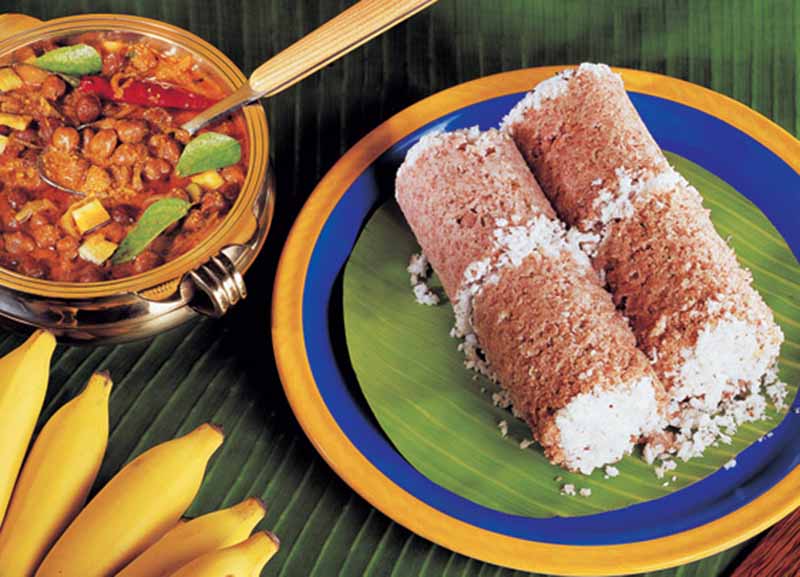 Puttu with Kadala curry & Bananas • PC: Self Drive Trips
Puttu with Kadala curry & Bananas • PC: Self Drive Trips 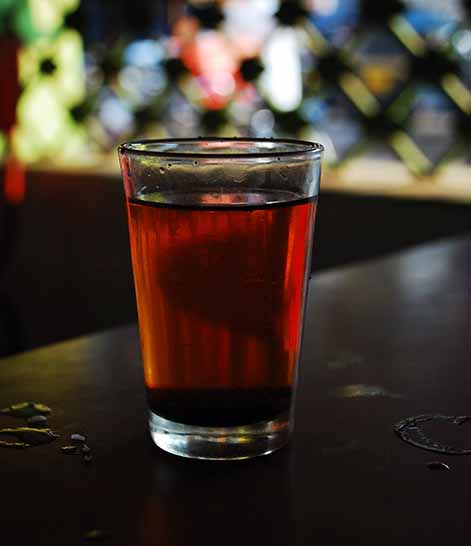
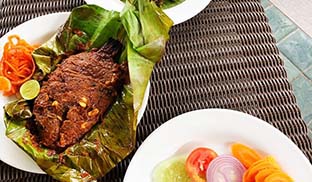
_Babish_VB_Flickr_Width_312pxHeight_182px.jpg)
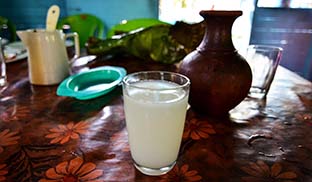
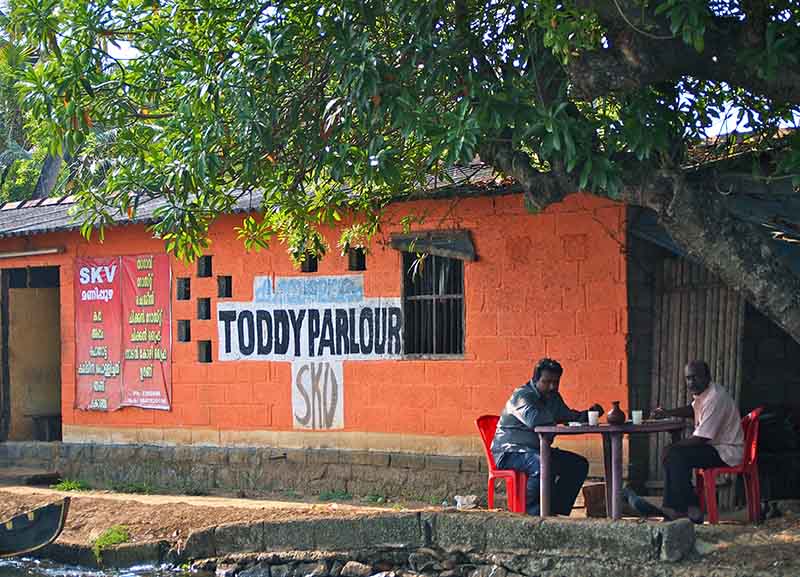 Local men enjoying toddy outside a toddy parlour in Kerala • PC: Lori Newman
Local men enjoying toddy outside a toddy parlour in Kerala • PC: Lori Newman 


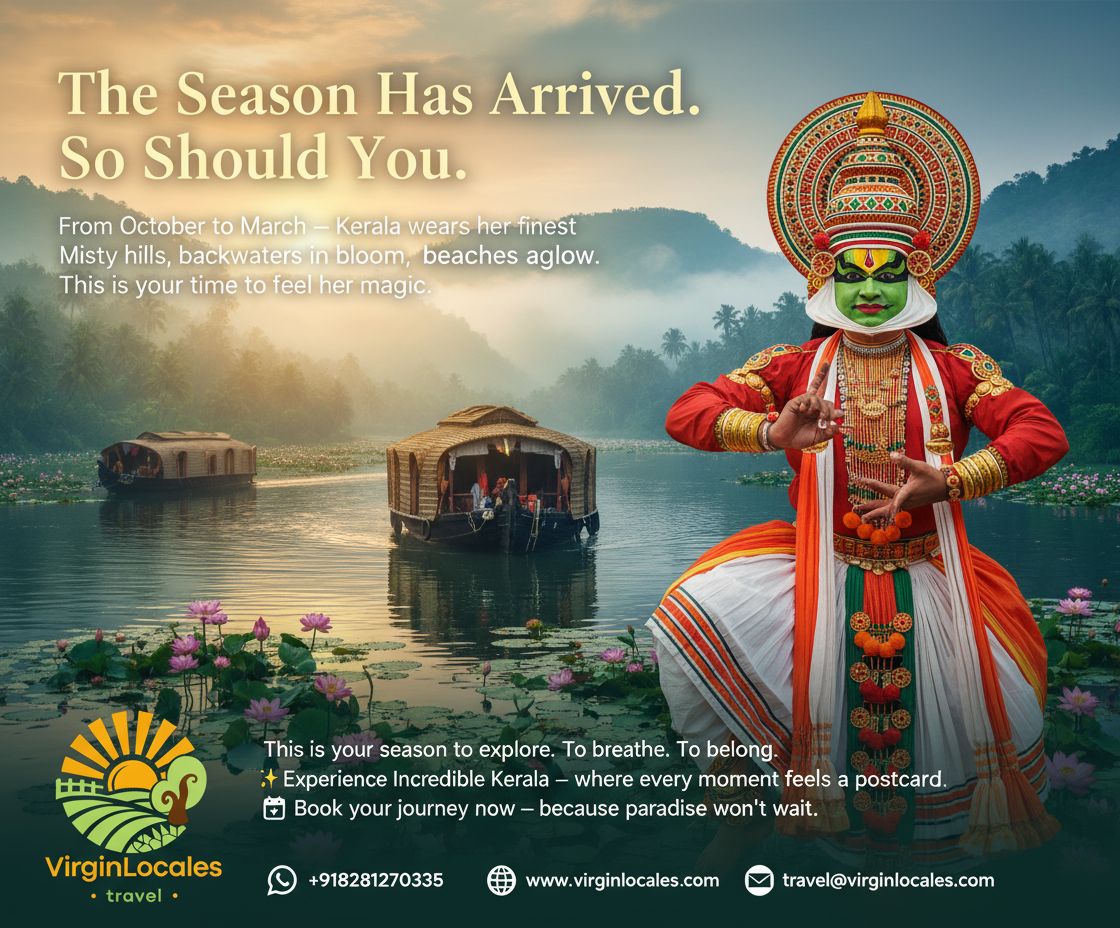
Reader's Comments
Lucy John, Kochi
Very detailed and interesting read.
Anju Cherian , Mumbai
The uniqueness and variety of food served in this part of the world, I bet you never get it anywhere.